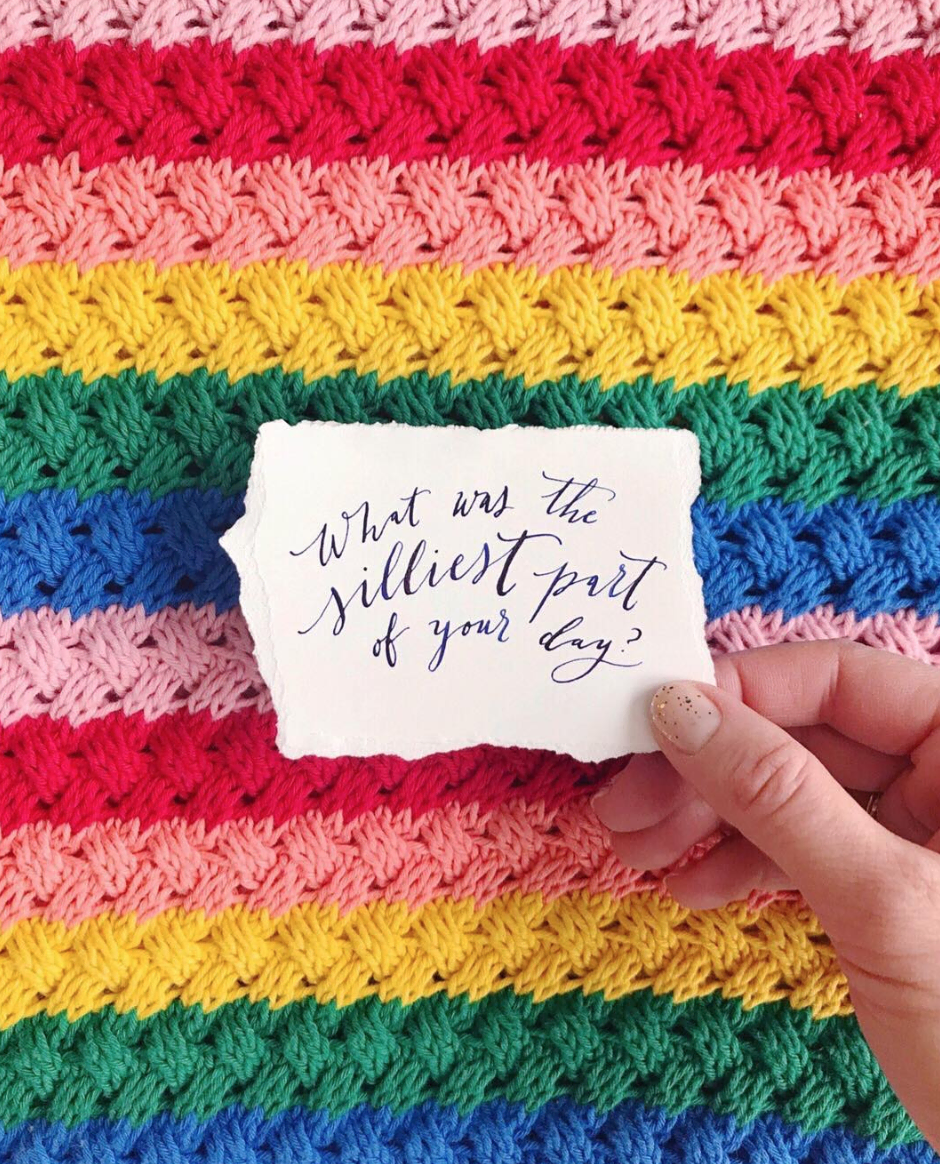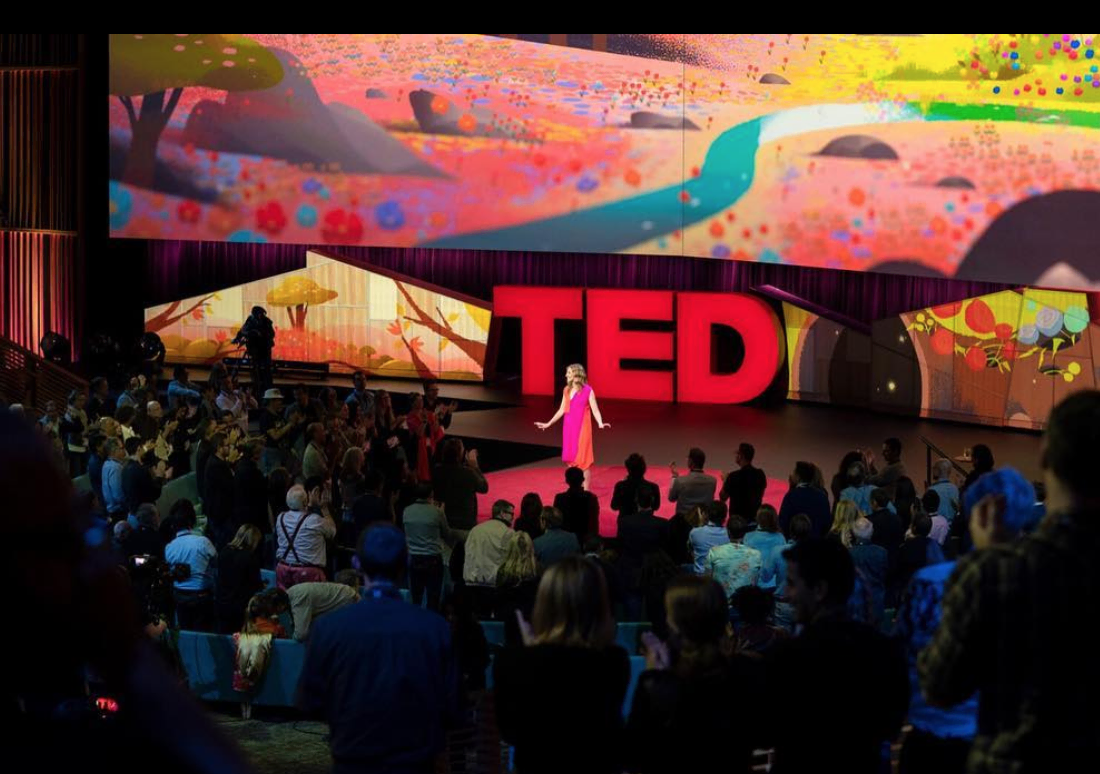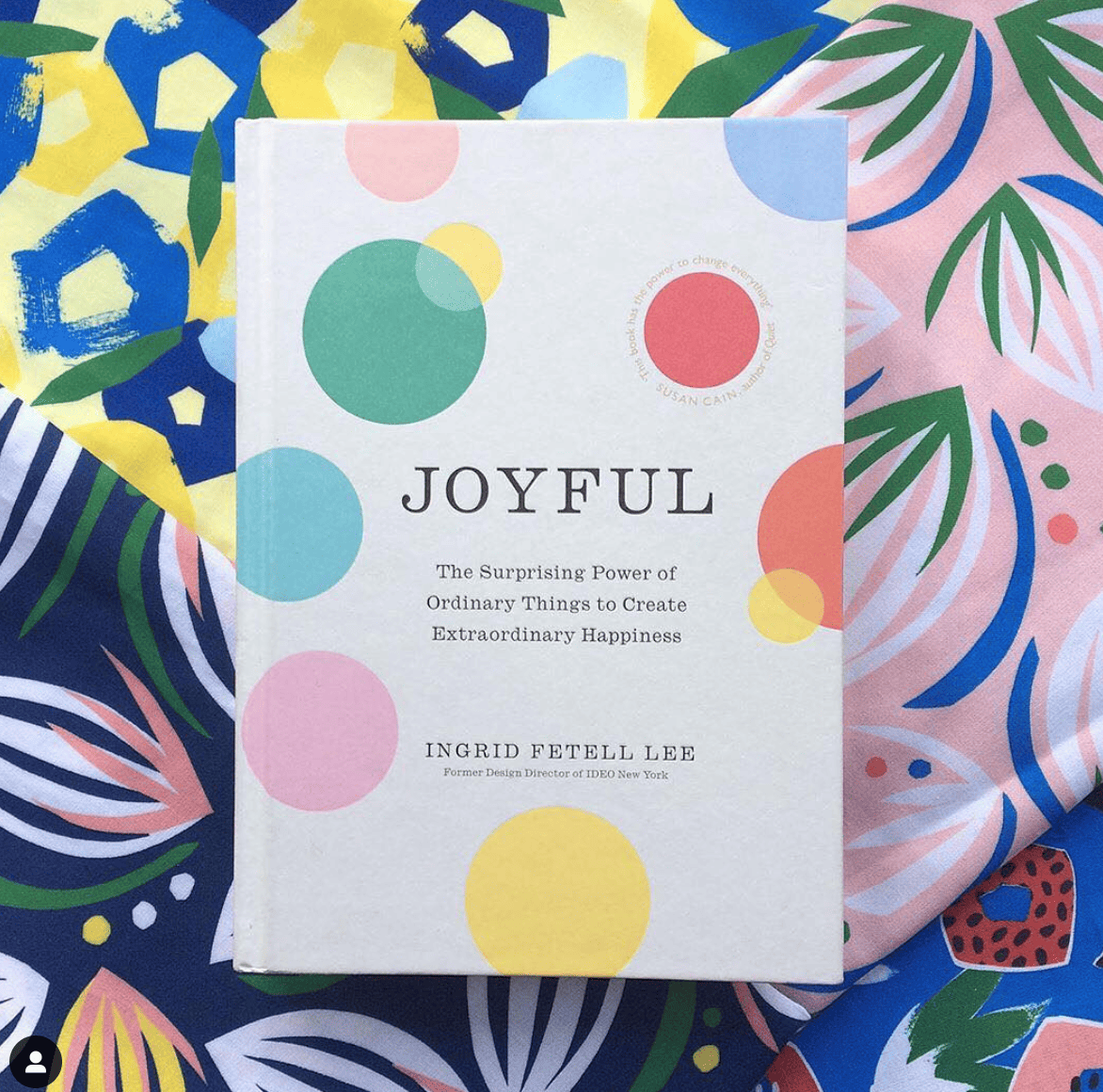This year we were inspired by Michelle Obama’s book, Becoming, our Book Club book for January, and we decided to focus on learning from women who we find inspiring and can tell us about their journey of “becoming”. You can read the rest of the interviews here. Stay tuned for more each month.
I’m pleased to share a new interview with professional joymaker and author of Joyful: The Surprising Power of Ordinary Things to Create Extraordinary Happiness, Ingrid Fetell Lee of Aesthetics of Joy. We read her book last month for @LarsBookClub, but the more I read the more I was intrigued with her as a person and how she became who she is now. Her focus on joy and color through the lens of design has led me to feel like I’ve found a kindred spirit! I find her answers so fascinating and I can’t wait for you to read it.
Ingrid is also a designer and former design director at IDEO. Her immensely popular TED talk “Where Joy Hides and How to Find it” has been viewed more than 17 million times. She has been featured as an expert on design and joy by outlets such as The New York Times, Wired, PRI’s Studio 360, CBC’s Spark, Psychology Today, and Fast Company. She has over twelve years of experience in design and branding, having led design programs for top brands.
Lee holds a Master’s in Industrial Design from Pratt Institute and a Bachelor’s in English and Creative Writing from Princeton University. She loves pancakes, polka dots, and rainbow sprinkles, and has an extensive repertoire of happy dances for any occasion.
Interview with Ingrid Fetell Lee
What do you consider yourself? Example: Artist, designer, illustrator, maker, business person etc.?
I’m a designer and writer. It’s sometimes a hard question because I go through phases of my career where I do more of one thing than the other. While researching my book, I sometimes felt much more like a writer than a designer. And there have been times when it has gone the other way. But even when I’m not actively practicing one or the other, I still feel that both are integral to who I am.

Who helped you “become” who you are?
My parents fed my curiosity about the world from a young age. They were both doctors, and I got used to scientific language and inquiry being a regular part of dinner table conversation. Early on I learned that there were no dumb questions and that everything I wondered about could be researched and explored.
I was also lucky to have the children’s book author and naturalist, Jean Craighead George living across the street from me while I was growing up. (She wrote the classics My Side of the Mountain and Julie of the Wolves.) Jean also fed my curiosity. She was always traveling to wild places, from Alaska to the Amazon, and bringing back stories and artifacts that widened my world. Jean had a whale vertebra on the floor next to her TV and a shark jaw over her mantle, like these things were normal objects to have lying around. She seemed to know everything about nature, and never minded when I showed up at her doorstep with a bird’s nest or a frog that had fallen into the pool and needed resuscitating. Her wonder at these things was infectious, and I learned so much about the power of observation from her.
The other great joy of my childhood was getting to spend summers with my grandparents. I stayed in their retirement home in Florida, swimming and working on creative projects with my Nana. Nana’s gift was that she could create beauty out of anything. She taught me how to sew, knit, and quilt. She nurtured my creative impulses and gave me my first real understanding of the importance of aesthetics.

Do you feel like you’ve arrived at what you set out to do?
I feel like I’ve arrived at the beginning of what I want to do. I’m just getting started.
What more would you like to “become”?
I want to become a better friend and partner. I want to become a mom. I want to become a better writer too. And my hope is that I’ll get to become something I don’t even know about yet!

How did you get started in your field doing what you do? What did you study? Did you go to school specifically for what you do?
My path has been really winding, but because my work falls in the space between disciplines, I don’t think I could’ve gotten here without those twists and turns. I studied English and Creative Writing as an undergrad. I wanted to be a novelist, but attempting to write a novel for my thesis changed my mind about that! I started working in market research and then in branding, which led me to discover design. It wasn’t until five years out of college that I realized I could go to school to be a designer, which is what I eventually did. I did my master’s at Pratt in industrial design.
At Pratt, I was a real outsider. Many of my peers already had training in art or design, while I had none. I had to learn drawing, color, model-making, fabrication. It was incredibly intimidating, but having had all my other experiences as a researcher and a writer helped me see design in a different light.

What’s your goal with your work?
I want to change the way we view the physical world, from being incidental to our happiness to being a vital source of joy and well-being in our lives. This starts with individuals. I want people to know that they don’t just have to find joy inside themselves, but that they can start to view the world around them as a reservoir of positivity in their lives. I hope I can help people feel empowered to use their creativity to make more joy, for themselves, and for others.
At the same time, I also think there’s a cultural shift that needs to happen, and this is a big part of my work. We have a tendency to undervalue joy, and to see things like color, pattern, and natural elements as “decorative.” Because of this bias, most public spaces lack these elements, and many of us feel guilty for “indulging” in them. I want my research to help creatives who are drawn to these things feel validated for including them in their work — and to encourage policymakers and funders to see joy as a necessity, not just a nice-to-have.

How did your childhood influence what you have become?
My parents divorced when I was two, and I spent most of my childhood going back and forth between their two houses. I didn’t realize until recently that I think this gave me a unique ability to straddle very different worlds, and to translate between them. All of my work is about bridging different ways of thinking and trying to find something new in the spaces between.
Did you have anyone along the way that was instrumental in the trajectory of your life?
When I was two years out of college, I had the idea that I wanted to live in Australia. So I packed up and moved to Sydney. I had letters of recommendation from my previous job, and one of these got me an interview at Landor, a brand consultancy that I admired. But after a brisk interview, the hiring manager said that she had no client manager positions open and went to show me out. “Oh,” I said, “but I was actually wondering if you might have anything on your brand consulting team?”
“Well,” she said, surprised, “yes, in fact we’re hiring on that team.” She left the room and brought in the head of the branding team, Damian. He and I talked for more than 40 minutes, and that week I had an offer for a contract position on his team. I knew nothing about branding, but Damian had liked my research experience and that I’d studied creative writing. He took a chance on me, and once I was in the door, he mentored me and pushed me. He made me present my work in front of large boardrooms full of clients, write op-ed pieces under my own byline, and read stacks of books. If I had wild ideas, I knew Damian would hear them out. I worked there for two years, and left so much more confident and knowledgeable — all because he decided to take a risk on hiring me.

What’s your work space like?
I have books everywhere. Above my desk, under my desk, on the windowsill next to my desk. My workspace is just a corner of my apartment, but it gets lots of light, which is critical for alertness and positive mood. I have lots of inspirational images pinned up on the wall to add color and help define the space as distinct from the rest of the apartment. I also keep a plant on my desk because plants have been shown to reduce stress and aid concentration. And I keep little spinning tops on my desk to play with — spinning them helps me feel like my thoughts are flowing even if I’m stuck on an idea.
Did you always have an ultimate plan?
I have dreams and goals (like writing a book, for example), but I could never have planned being where I am now. I tend to live my life in questions. I try to pay attention to where my curiosity is pulling me, and then be open to the shape in which the answers emerge.

What piece of advice would you give to someone starting out in a creative field?
Focus on the work. Through the years, lots of people told me that I needed to focus on “building a following” and networking. And of course, it’s great to be open to connections and potential collaborations. But be careful that those activities don’t take you away from doing your work, the work that is truly unique and that only you can do. It’s always clear to me when someone has put in the deep work to create something special, as opposed to trying to get visibility quickly. They know who they are and what they’re trying to achieve in the world, and it shows in what they’re creating. Slow and steady is better than a flash in the pan.
What does your dream retirement look like?
Somewhere by the sea with my husband Albert, in a house full of books. Doing a little writing and a little painting. Tending an amazing garden. Getting to spend time with friends and family. Traveling and learning new things daily.

What’s inspiring you lately?
I am thinking a lot about spirituality and what it means for me. I recently discovered the Medicine Woman’s Tarot, and I really love seeing a familiar tool through a more feminine lens. As someone who aims to translate scientific research into the mainstream, I’m generally a real rationalist. It’s important to me to distinguish between facts and beliefs. But I also believe it’s arrogant to think we know everything, and I think mystery is important in life.
I find things like the tarot interesting not as fortune-telling devices, but as tools for introducing mystery into daily life. (If you pick a random card and read about it, how does that help surface new ideas or possibilities?) Similarly, I’m becoming more interested in imagination and creativity as spiritual tools. Some people might find prayer or meditation as effective ways of communing with a higher power or higher self. Those tools haven’t really worked for me, but I find there’s something powerful about visualization. If I go through a visualization exercise, does it really matter if it’s real or if I “made it up”? I’m learning that I can use these creative impressions as a way to better understand my own mind, and my role in the world.
Thank you for joining us, Ingrid!
You can find Ingrid here:
photos taken from Ingrid’s instagram




Comments